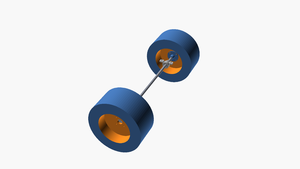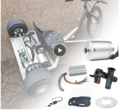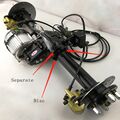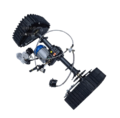Wheels and axles: Difference between revisions
From
No edit summary |
No edit summary |
||
| Line 32: | Line 32: | ||
===Variations=== | ===Variations=== | ||
<gallery> | <gallery> | ||
Integrated transaxle w- disc brakes.jpg|https://www.aliexpress.com/i/33008542584.html 48V 60V 72V 500W 650W 800W 1000W 1200W Electric Rear Axle Motor 3-Wheel Cargo Engine Electric Rickshaw DC Brushless Motor 100CM | Integrated transaxle w- disc brakes.jpg|[https://www.aliexpress.com/i/33008542584.html 48V 60V 72V 500W 650W 800W 1000W 1200W Electric Rear Axle Motor 3-Wheel Cargo Engine Electric Rickshaw DC Brushless Motor 100CM] | ||
Integrated transaxle w- tracks.png | Integrated transaxle w- tracks.png | ||
</gallery> | </gallery> | ||
Revision as of 04:40, 9 May 2022
Technique: Wheels and axles
| Reusability | Reversible |
|---|---|
| Designers: | Phil Jergenson, Timothy Schmidt |
| Tools: | Wrenches |
| Parts: | Frames, Nuts, Bolts, End caps, Axial bearings, Keyed shafts, Keys, Shaft collars, Wheel hubs, Wheels |
| Techniques: | Tri joints |
Introduction
A beam axle, rigid axle or solid axle is a dependent suspension design, in which a set of wheels is connected laterally by a single beam or shaft. Beam axles were once commonly used at the rear wheels of a vehicle, but historically they have also been used as front axles in four-wheel-drive vehicles. In most automobiles, beam axles have been replaced with front and rear independent suspensions.
Challenges
Approaches
Light duty: Modular go kart drive
Medium duty: Integrated transaxle
Variations
- 48V 60V 72V 500W 650W 800W 1000W 1200W Electric Rear Axle Motor 3-Wheel Cargo Engine Electric Rickshaw DC Brushless Motor 100CM
- Rear Axle Four-wheel Snowmobile Electric Go-kart ATV Modified Track Wheel Motor Half Axle Difference Number Tooth Package
Heavy duty: 9 inch Ford bolt-on rear axle
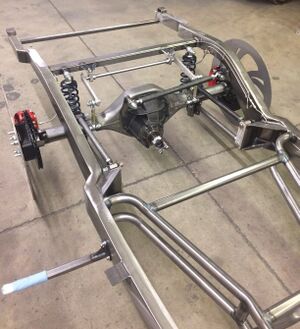
- housing
- third member
- pinion yoke
- gearset
- axles
- bearings
